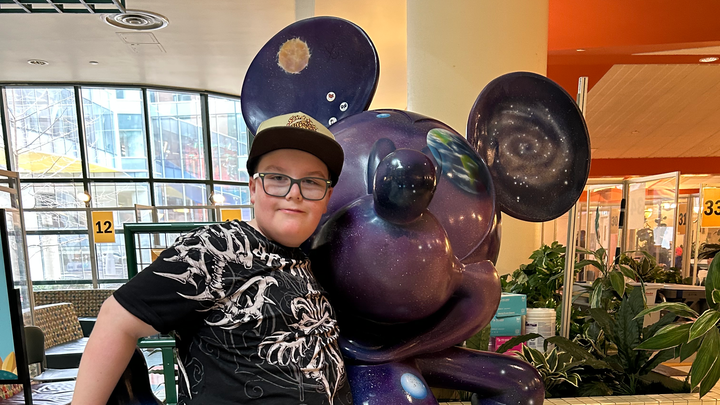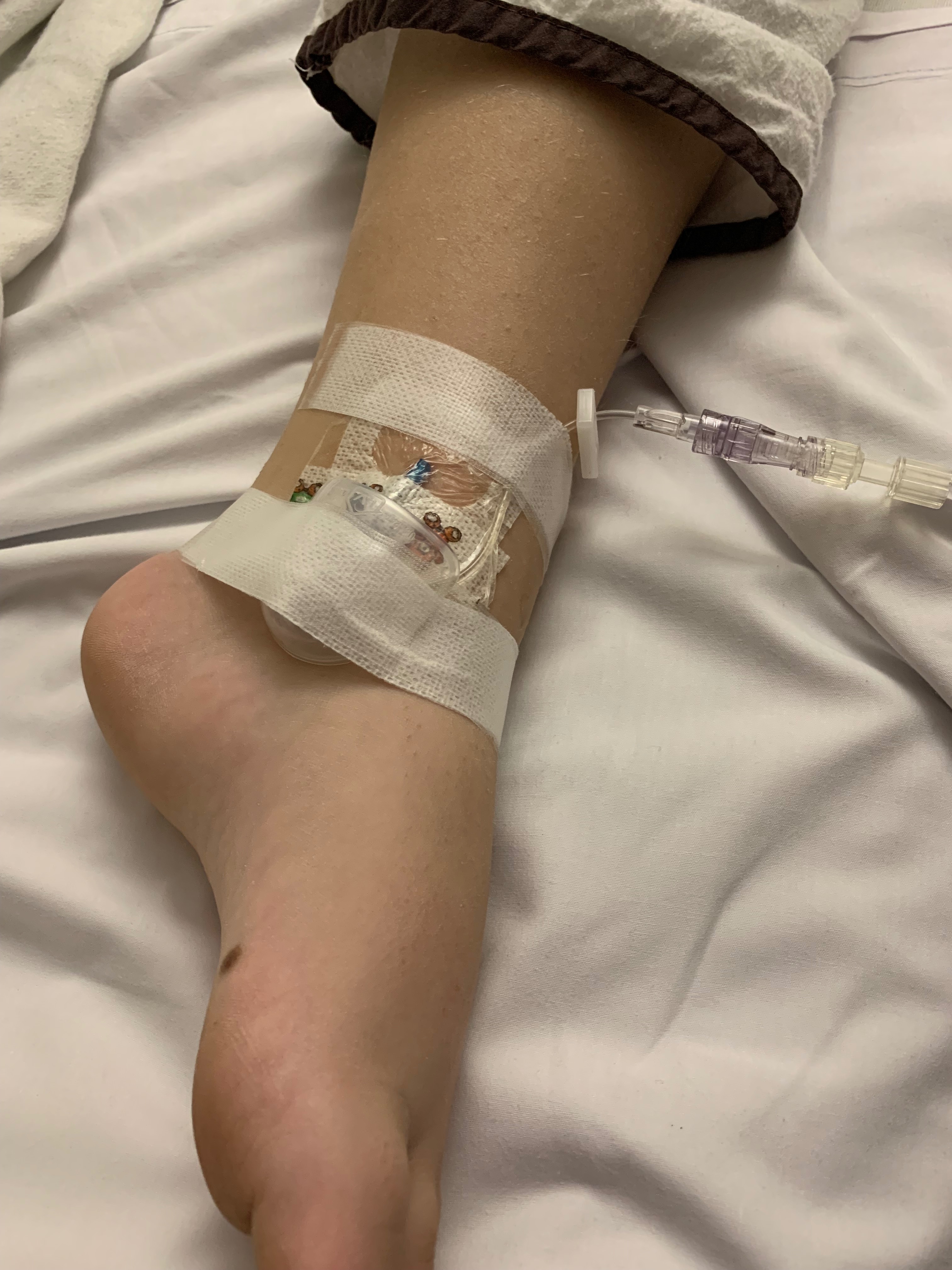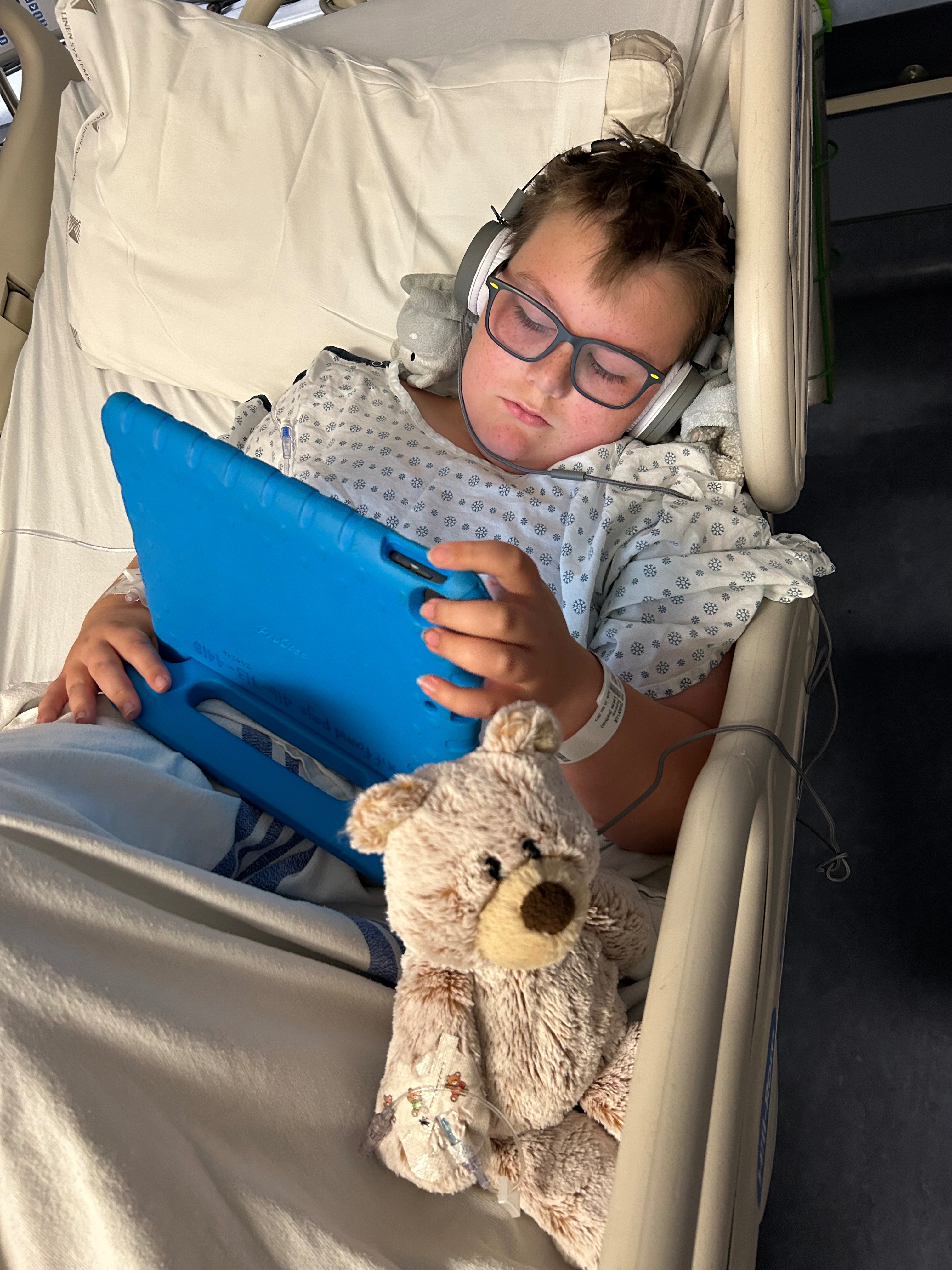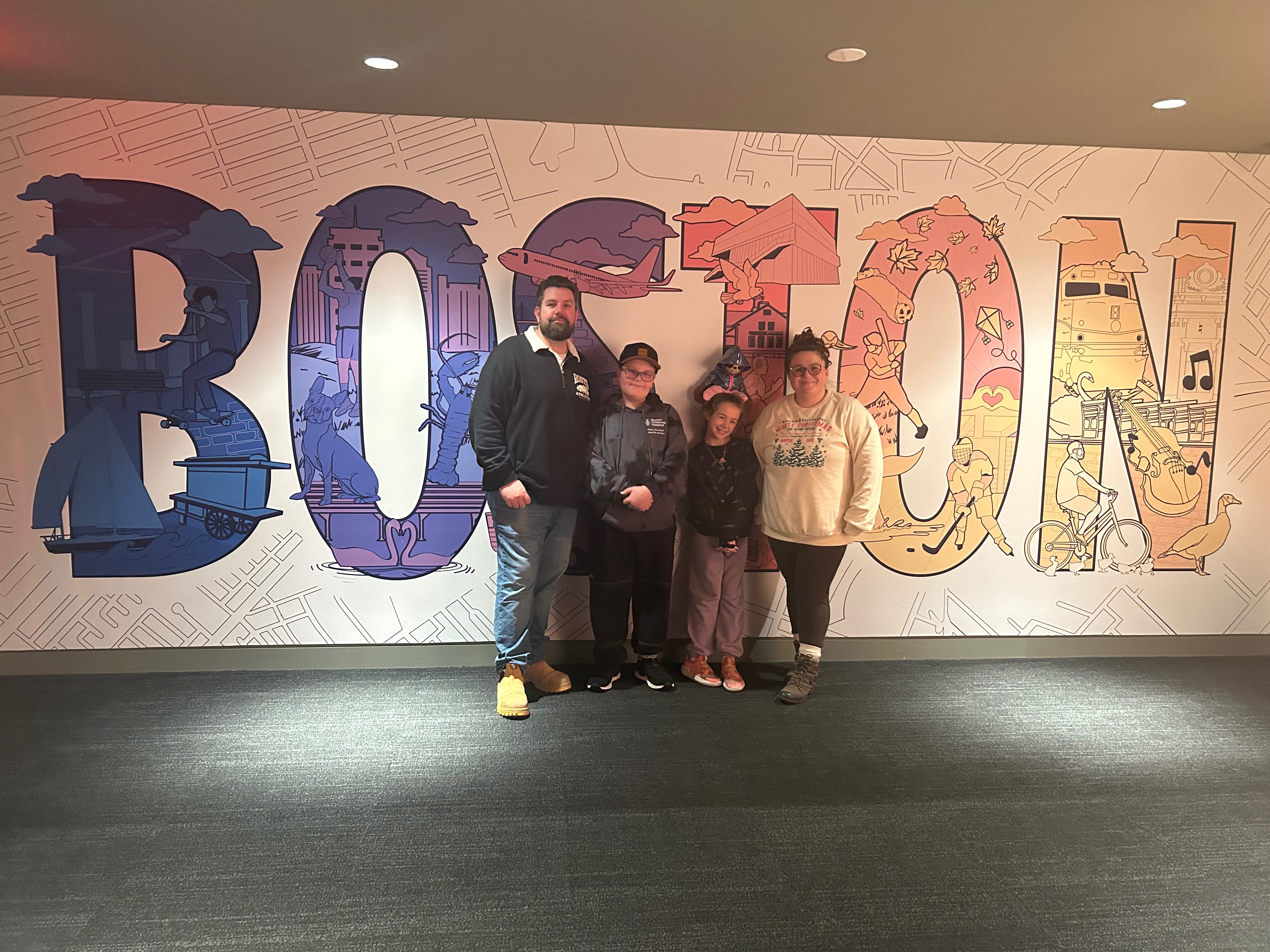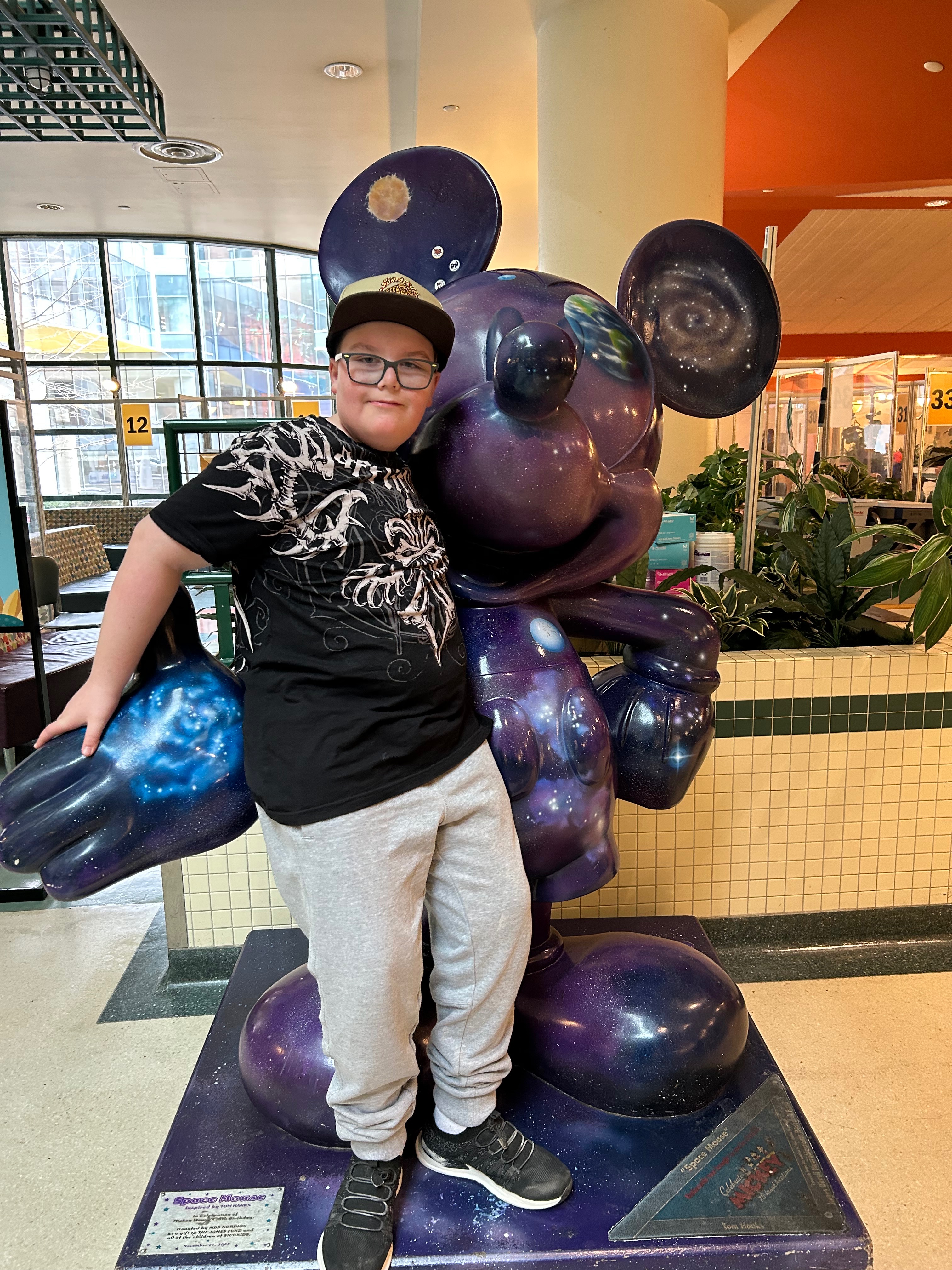Lucas is a brave 13-year-old boy who has spent much of his life fighting a rare and debilitating brain condition called Idiopathic Intracranial Hypertension (IIH). After a decade of experimental treatments, countless hospital stays, and multiple surgeries—including being the first child in Canada to undergo a rare brain stenting procedure—Lucas is now facing his biggest challenge yet: a life-saving cranial vault expansion surgery that is not available in Canada for children his age.
The top neurosurgical team at Boston Children’s Hospital has experience performing this exact procedure on older children like Lucas, and they’ve offered hope that this surgery could finally bring the lasting relief he deserves. The operation will involve removing and reshaping parts of Lucas’s skull to relieve pressure on his brain—a complex 6-hour procedure using titanium plates that offer greater safety and stability for children his age.
The cost? $250,000 USD—and that’s just the beginning.
This amount does not include hospital stays, flights, accommodations, food, or lost wages during the 3–4 weeks his family will be in Boston.
Lucas’s family has exhausted every medical option in Canada and was devastated to learn that a misdiagnosis years ago led them down a painful and costly path. After finally learning that his skull was prematurely fused—a condition called craniosynostosis—they knew they had to act. They are now taking out loans to ensure Lucas gets the surgery he needs in Boston, but they can’t do this alone.
We are asking for your help.
Every donation, no matter the size, will go directly toward:
- The cost of Lucas’s surgery
- Travel, lodging, and food for his family
- Pre-operative care and appointments
- Post-operative care and recovery support
- Emergency expenses such as ICU stays or surgical complications
Lucas has missed out on so much of his childhood—holidays spent in hospitals, birthdays with IV poles, and years of fighting a battle no child should have to fight. But through it all, he has remained joyful, resilient, and brave—always finding happiness in the small moments, like playing with his little sister Lilly.
Now he needs us to help give him the best shot at a healthy future.
Please donate if you can, and share Lucas’s story far and wide. If you’d like to read more about his 10-year journey—including the heartbreaking misdiagnosis and how his family got to this point—scroll down for the full story written by his parents.
From the bottom of our hearts—thank you.
From Tessa and Dan:
Lucas’s Story:
Lucas has had a long medical journey with a rare adult brain disease called idiopathic intracranial hypertension, IIH for short. He was diagnosed when he was four but had been sick for quite some time prior to diagnosis. In essence the pressure in his CSF fluid surrounding his brain and spinal column is too high. If the pressure remains high it will eventually cause total blindness, brain damage and debilitating migraines, among other things. Unfortunately, after trying every conventional therapy available, we then embarked on a journey of experimental treatments and surgeries, but we were never able to achieve longstanding remission, all the while the different therapies we were trying reeked havoc on the rest of his body.
By age 7 the steroids used to control his CSF pressure caused full blown osteoporosis resulting in 12 spinal fractures, a compromised immune system and adrenal suppression. A common cold or infection for you or I would mean a stay in the hospital and IV life saving medication for Lucas. On two separate occasions Lucas lost consciousness and required CCU intervention because after years of steroids his body could no longer mount a proper defence against infection. We watched him suffer, celebrating holidays and birthdays numerous times at the hospital but we also watched him be so brave, finding joy in life’s simplest of things, like playing with his little sister Lilly.
After all pharmaceutical options failed, Lucas underwent experimental brain surgery and at age 7 was the first child in Canada’s and 7th in the world to have stents placed in the sinuses of his brain to help facilitate the flow of CSF fluid. For a short period, we thought we had finally found our cure, but unfortunately, he relapsed within the first year. Several relapses and several surgeries later we enjoyed a period of remission in the fall of 2023. Unfortunately, in the spring of 2024 I started noticing signs of a coming relapse, but as we continued to do regular follow ups, the traditional tests we had always relied on were indicating everything was fine, we now know they are no longer reliable because his optic nerves have swelled and shrunk too many times. Then at the end of June 2024 Lucas suffered his most profound relapse to date. It started with double vision while hiking through a waterfall as a family, five days later we were sitting in the emergency room and his eye had turned inward, unable to straighten or look outward.
After 8 days in hospital and multiple tests and procedures, including an emergency lumbar puncture to assess the level of pressure in his CSF fluid and drain fluid off to reduce the pressure, we were able to stabilize him with the help of medication. We could finally go home! Ten days later we were back at the hospital for follow up when the rug was pulled from beneath our feet. We learned Lucas’s recent CT scans had indicated that his skull bones were fused, the sagittal suture is supposed to remain open until your 30s and Lucas’s was closed. As Lucas has had numerous CT and MRI scans, I queried when could this have happened? This was something we ruled out when Lucas was 7 and we were planning for his big surgery. This was something I had started asking about when Lucas was 5 and wasn’t responding to treatment because a fused skull can create an imbalance between the space needed for the growing brain and the CSF fluid that surrounds it. A fused skull can lead to high pressure. For years this was something we were told was not the problem in Lucas’s case.
Typically kids with a fused skull have a mis-shaped skull and Lucas did not. But now 6 years, multiple surgeries, damage to his brain and an immeasurable amount of lost childhood later we were learning it had always been fused. Right from that very first CT scan, and based on the appearance, for years prior to that first CT scan. Unfortunately, the scan had been misread and because he did not have the typical signs of craniosynostosis no one ever looked again. We were devastated but we also felt hope that maybe we finally knew why our Lucas was still sick, why he never had the energy to play like other kids and maybe just maybe we could finally get him better. Unfortunately it would take four months and us paying thousands of dollars for a second medical opinion from the experts in atypical craniosynostosis (premature fusing of skull bones) at Boston Children’s Hospital for our team to come to the conclusion that this was likely a contributing factor in Lucas’s IIH and would need surgical intervention.
The surgery he needs requires cutting, expanding and reshaping his skull into several segments and fastening them with either a titanium or resorbable plate on the top of his brain. It is a major surgery, roughly 6 hours long. He will likely need a blood transfusion. The ideal age for this surgery is within the first year of life, but no later than 18 months. At our hospital only a handful of kids older than that have had this surgery, with most of them around age five when atypical craniosynostosis, like Lucas’s can manifest. We now know, this was when his manifested but was missed. The experts in Boston perform this surgery on 1-2 older kids every year. Their approach is completely different to the approach being proposed by our doctors. At our hospital, the proposed plan includes the use of a resorbable plate to anchor Lucas’s skull bones to after expanding the skull. The team in Boston uses titanium. They have indicated that although the use of resorbable plates are perfectly suitable for younger children and babies, they have the potential to fail if used on older children due to the increased weight of their skull bones. To be clear, if the plate fails, the results would be catastrophic, at best it would lead to brain damage and at worst it would lead to death. After years of experimenting with Lucas's health whether it be through off label prescribing or experimental brain surgery, we have decided the experimenting phase of this journey is over. He deserves to have the best chance at the best outcome. That means taking him somewhere to have his surgery where doctors have done it and do it routinely on children his age. That means using a surgical plan that is tried and true across multiple patients. That does not mean proceeding with a surgical plan and surgical materials that have not been tested and proved repeatedly on a child of Lucas’s age.
Despite our hopes that our team would recommend to OHIP that Lucas receive out of country coverage due to the lack of experience with this procedure and an entirely different surgical approach and approved surgical materials, we were told they stand strongly behind their ability and surgical plan and will not make the recommendation. So, we are left in a situation where we must take out a loan to pay for Lucas’s surgery because we are not willing to gamble with his future, gamble with his life. He has lost so much of his childhood, all of it really, we want to protect his adolescence and adulthood and that means choosing the surgical pathway that has been proven to work on countless other kids like Lucas, not the surgical plan that feels like another experiment.
Organizer and beneficiary
Jessica Vickery
Organizer
Caledon, ON
Daniel Pomeroy
Beneficiary

